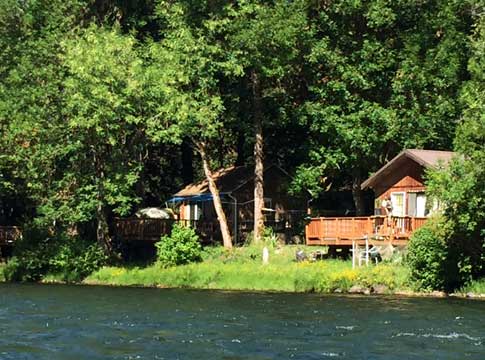Related News
Related News
-
EWEB secures $2.5 billion of reliable, affordable, carbon-free energy for customers
The new contract with EWEB’s largest energy supplier, the Bonneville Power Administration, forms the foundation of a diverse energy portfolio.
Find Out More -
EWEB Hometown Heroes compete internationally
Out of 290 teams from 14 different countries, EWEB's Lineman Rodeo team places in the top third of competitors.
Find Out More -
Sustainability Snapshot - Celebrating Energy Efficiency Projects in the Community
Sustainability Snapshops highlight impactful projects completed by EWEB's Customer Solutions department, as a way to celebrate the meaningful work happening behind the scenes.
Find Out More -
Let's Talk Turkey. Is your family ready for winter?
We're heading into the holidays, but that also means snow, ice, and not-so-nice weather might be in the forecast. Here are some tips to prepare in advance.
Find Out More -
EWEB Partners with Eugene School District 4J to Celebrate New Kennedy Middle School Emergency Water Station Site
Hundreds of attendees practiced filling up water containers at Saturday's demonstration event.
Find Out More -
Electric Projects underway in North & South Eugene
Underground lines and disaster-resilient power poles are part of EWEB’s infrastructure upgrade near Eugene’s largest natural resource area.
Find Out More -
The Bonneville Power Administration Rate Change and Your EWEB Bill
BPA’s finalized rate increase is smaller than projected, and EWEB’s pass-through adjustment effective October 1, 2025 will now be 2.7% for residential customers—down from the anticipated 4%.
Find Out More -
Join the Pledge to Prepare
When you think about getting ready for an emergency, you probably have questions. You aren't alone. Preparing for emergencies can be overwhelming, which is why EWEB has put together a 12-month program to help you and your family get two weeks ready.
Find Out More -
You can’t predict the next disaster, but you can prepare
The earthquake lasted less than a minute. But now the power’s out. The tap runs dry. Cell service is spotty. Would you be ready?
Find Out More -
EWEB completes helicopter installation of salmon habitat features
EWEB adds downed trees and 2,000 tons of gravel to the Uupper McKenzie River below Tamolitch Falls to improve spawning habitat.
Find Out More -
Court rules in favor of EWEB in Carmen-Smith litigation
The U.S. District Court in Eugene has granted EWEB's motion to dismiss a lawsuit brought under the Endangered Species Act pertaining to fish passage at EWEB’s Trail Bridge Dam. The favorable ruling clears the way for EWEB to continue advancing towards implementation of permanent fish passage at the dam.
Find Out More -
EWEB proposes modified plan for permanent fish passage at Trail Bridge Dam
After eight months of extensive collaboration and analysis with scientific experts at two federal regulatory agencies, EWEB is proposing an improved plan to build permanent fish passage facilities at Trail Bridge Dam on the McKenzie River.
Find Out More -
Sustainability Snapshot - Ideal Steel July 2025
Our second Sustainability Snapshop highlights a project where EWEB helped a local industrial warehouse upgrade over 1,000 flourescent lights to new efficient LEDs.
Find Out More -
EWEB prepares for wildfire season with risk mitigation measures
EWEB is building a more resilient electric system to weather various types of disasters, from wildfire to winter storms.
Find Out More -
EWEB Pilots New Line Safety Program for 4th graders.
This year, EWEB is ramping up power line safety for children, specifically 4th graders.
Find Out More - Show More
Tips for Protecting Your Trees
January 12, 2017

With the onset of the new growing season, spring is an optimal time to assess and promote the health of the trees on your property. The following tips may help you identify potential problems and protect your portion of Eugene's urban forest.
Inspection: Identify these features that may require attention
- Broken, hanging or split limbs in the tree canopy
- Limbs or portions of the tree without buds, or that are not leafing out consistently
- Yellowing of foliage on evergreens
- Damage to tree trunks or root areas
- Uncharacteristic lean and soil disturbance in the root area
One or more of these features could indicate a decline in the health of your tree, consult a certified arborist for a more thorough investigation. If your tree is in the vicinity of overhead utility lines, contact us to assess the potential hazards.
Prune & Cleanup: Eliminate hazards and reduce disease transmission
- Remove dead and damaged branches using proper pruning techniques
- Rake up debris that has collected at the base of trees to prevent the spread of fungal pathogens
Never prune trees near power lines yourself, and remember that private contractors require clearance to prune trees near overhead utility lines. Call us for assistance when planning work with your arborist. Proper tree pruning procedures can be found in the American National Standards Association A300 Pruning Standard.
Mulch: Protect your tree
- Add a 2- to 3-inch layer of mulch around the base of your trees to suppress weeds, retain moisture and prevent damage from landscape equipment
- Avoid piling mulch in contact with tree trunks to avoid disease transmission
We provide rough quality wood chips free of charge. Contact our Vegetation Management Program to request chips. Call (541) 685-7000, then select "5" then "2" then "1."
Water & Fertilizer: Give your trees the best chance to thrive
- Newly planted trees require watering for the first two to three years
- During the dry summer trees should be watered deeply once a week
- Sprinklers should be adjusted to water the soil in the root zone, avoid watering foliage directly
- Organic compost and mulch slowly decompose and release nutrients into the tree root zone
Consult a local nursery or certified arborist for species-specific watering recommendations. Certain nutrient deficiencies and conditions can be treated with inorganic fertilizers. Consult a certified arborist to further assess your trees needs and soil characteristics.

